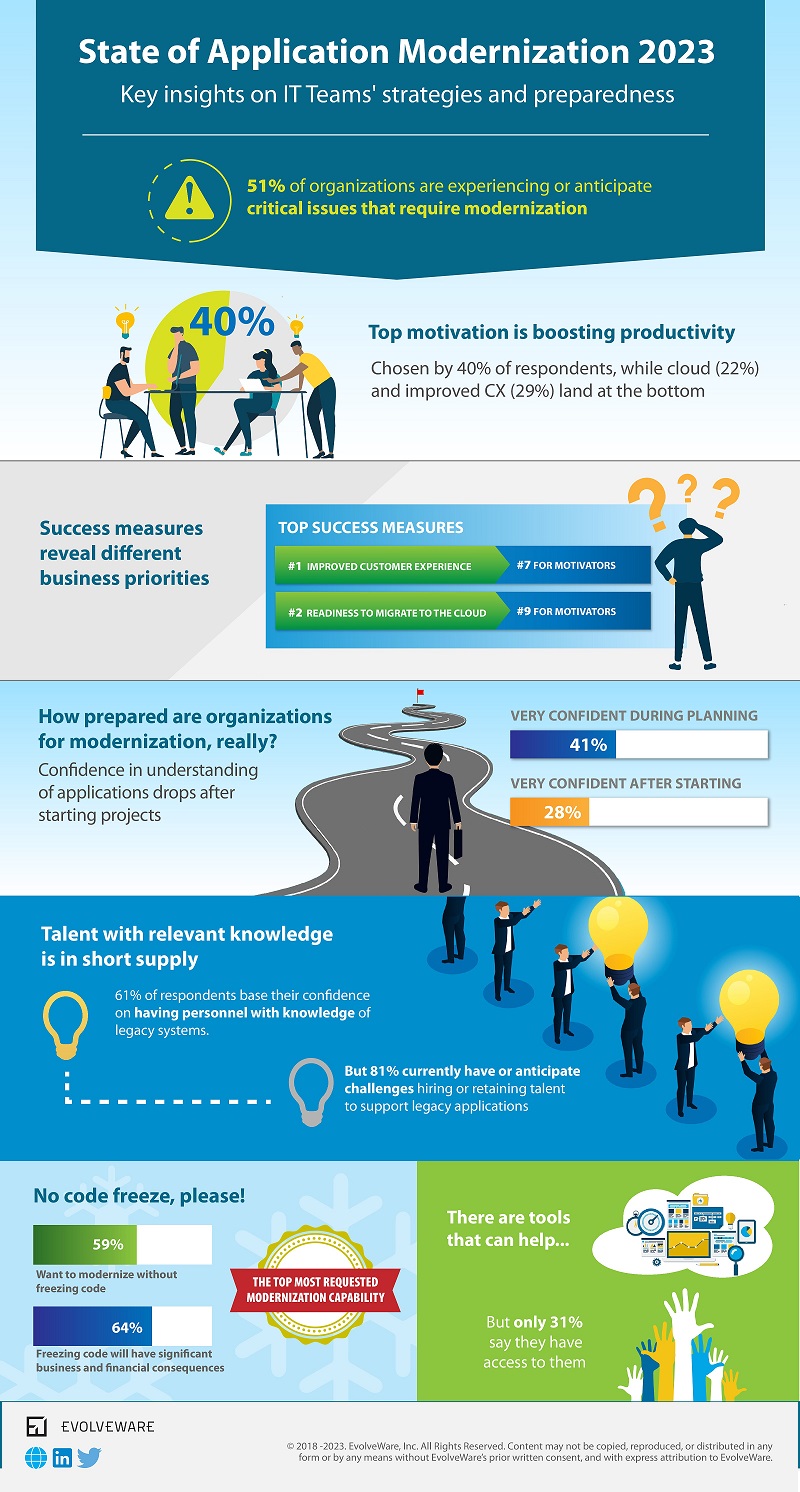As businesses continue to rely heavily on technology to drive growth and innovation, the importance of modernizing outdated applications has become a top priority for CIOs and IT teams. With this in mind, EvolveWare commissioned an independent survey to gain current insights into IT teams' strategies and preparedness for modernization initiatives, revealing some surprising contradictions to common assumptions around modernization priorities and goals. It has also highlighted a curious disconnect between IT leaders' perception and the reality of their overall readiness, their ability to secure legacy talent, and the availability of the much-sought-after technology capabilities.
Key findings include:
Confidence in understanding of applications wanes as projects progress
A comparison of the confidence in knowledge of applications being modernized between those who have not yet begun their modernization projects (41% very confident) to those who have already begun projects (28% very confident) reveals a notable drop. This is likely an indication that organizations only start to realize the level of knowledge needed for these efforts after they execute on the project plans.
Many respondents also base their confidence on having personnel with knowledge of these legacy systems. This is a clear blindspot for IT leaders, as a full 81% of respondents say they currently have — or anticipate — challenges hiring and/or retaining legacy programming talent. This shortage of specialized IT talent will only continue to grow as employees retire and expertise in legacy systems continues to decline.
IT Teams and the rest of the C-Suite may not be aligned on modernization goals
The number one modernization motivation for IT team respondents is boosting employee productivity (40%). This is opposed to commonly cited rationales such as improving customer experience (29%) and migrating to the cloud (22%). However when looking at success measures, increasing business efficiency is in the bottom two chosen, which boosting employee productivity would typically be related to. This discrepancy seems to imply that while IT teams are looking to address challenges they face with maintaining legacy applications, possibly due to lack of documentation and/or lack of qualified personnel, they must also justify these projects in terms that are important to business leadership.
Reasons most often cited by the C-Suite for modernization are directly related to increasing revenue and profits, such as moving to the cloud to improve customer experience and reduce costs. The disconnect indicates that IT teams, who have their own modernization motivations, must find ways to align with the C-Suite who are defining tangible measures of success, prior to executing on these projects.
IT teams lack of awareness and access to modern tools
Most respondents don't believe they have access to the capabilities they want. For example, more than half would like to automate code transformation and business rules extraction (BRE) to a large degree, and 40% want to automate application documentation creation. Similarly, 64% believe freezing code during the modernization process will have significant business and financial consequences, and a full 59% say the ability to modernize without freezing code is on their technology wish list, making it the top most requested modernization capability. Yet while these, and other technologies on their wish lists, are available in the current modernization market, no more than 31% of IT leaders say they have access to them.
The ability to successfully modernize will be a key differentiator for businesses as they navigate the ever-evolving digital landscape. While the process can be complex and challenging, insights into potential blind spots and disconnects can help IT leaders develop more effective strategies and make the most of their available resources and technological advancements.



